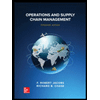Potential Market Risk Exposure: The danger of bank loss at some future time if the customer who entered into a market-based contract with the bank fails to perform.
|
On- |
(in millions) |
|
Cash |
$ 10,000 |
|
Government securities |
30,000 |
|
Interbank deposits |
5,000 |
|
Home loans to |
20,000 |
|
Loans to corporate customers |
75,000 |
|
Total Balance Sheet Assets |
$140,000 |
|
|
|
|
Off-Balance Sheet Items |
|
|
Standby letters of credit backing corporate borrowings |
$ 10,000 |
|
Long term unused loan commitments made to private corporations |
20,000 |
|
Total Off-Balance Sheet Items |
$30,000 |
|
|
|
|
Bank Capital |
|
|
Common stock (par value) |
$ 1,000 |
|
Surplus |
1,500 |
|
|
1,500 |
|
Subordinated debentures |
2,000 |
|
Minority interest in subsidiaries |
1,000 |
|
Allowance for loan and lease losses (reserves) |
1,000 |
|
Non cumulative perpetual |
1,000 |
|
Intermediate term preferred stock |
4,000 |
|
Equity commitment notes |
2,000 |
|
|
|
Basel Agreement I (1988): An international treaty involving the U.S., Canada, Japan & the nations of Western Europe to impose common capital requirements on all banks in those countries. Under the terms of this agreement, sources of bank capital were divided into two tiers:
Tier 2 Capital Info- (supplemental capital) includes the allowance for loan & lease losses, subordinated debt capital instruments, mandatory convertible debt, intermediate-term preferred stock, cumulative perpetual preferred stock, equity notes & other long-term capital instruments.
Trier 1 Capital info- (core capital) includes common stock & surplus, undivided profits, qualifying non-cumulative perpetual preferred stock, minority interest, selected identifiable intangible assets less goodwill & other intangible assets.
Basel Agreement requires a banker to divide each contract’s risk exposure to the bank into two categories:
-
- Potential Market Risk Exposure: The danger of bank loss at some future time if the customer who entered into a market-based contract with the bank fails to perform.
- Current Market Risk Exposure: To measure the risk of loss to the bank should a customer default today on its contract, which would compel the bank to replace the failed contact with a new one.
Using the information below, find the following:
- Tier 1 risk-based capital ratio and total risk-based capital ratio
- Is the bank complying with all the Basel I requirements?
- Provide recommendations on how the bank can be more compliant with Basel I requirements.
Step by step
Solved in 2 steps









